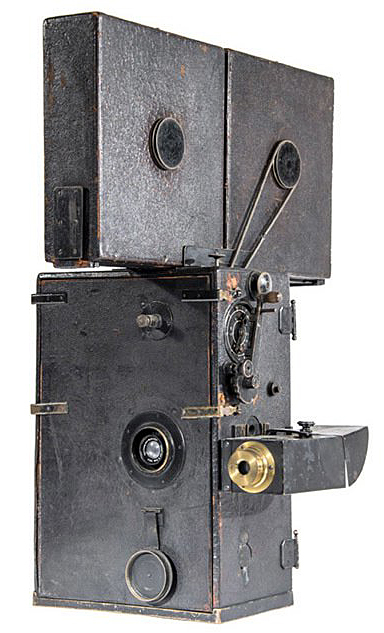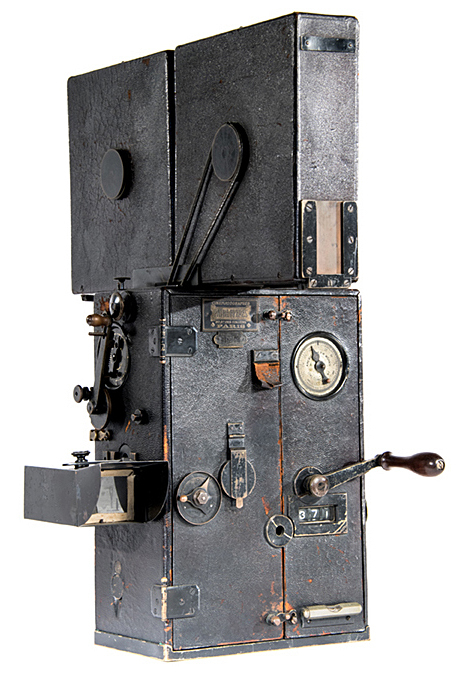Introduced in the early 1900s, the iconic Pathé Studio was the primary camera used from the early to mid Silent Era, based on a patented Lumière design.

Made primarily of wood, fabric and leather, the 35mm Pathé Studio camera is very lightweight, even with the top-mounted 400' magazine. A unique iris mechanism allows the cinematographer to fade to black or white during a shot, as well as create in-camera overlapping dissolve effects by way of backwinding the film.
Some 1,700 Pathé Studios were reportedly produced and used to shoot such notable features as The Birth of a Nation (1915; photographed by Billy Bitzer, ASC) and the serial The Perils of Pauline (1914; Arthur Miller, ASC, whose own Pathé Studio was also donated the ASC collection). At one time, it was the most advanced and popular motion picture camera in the world.
Based on the same patent as earlier Lumiére Cinematograph (1895; itself based on work by French inventor Léon Bouly), it's clear to see the resemblance between the two cameras.

The hand-crank camera was notorious for building up static electricity charges during use, which would ruin footage by creating white streaks in the emulsion — a dilemma that in part lead cinematographers to form (and name) The Static Club of America, which would strive to diagnose and troubleshoot such technical dilemmas and eventually become the ASC.


After the 1912 introduction of the more advanced Bell & Howell 2709 — the first all-metal camera — the Pathé soon became passé, relegated for use on low-budget productions or as a second camera running next to a 2709. (You'll find an excellent example of the 2709 in the ASC Museum collection.)
The camera pictured here — serial number 1125 and manufactured by Pathé Freres in Paris in 1915 — was photographed at the ASC Clubhouse by Richard Edlund, ASC and Dave Inglish.